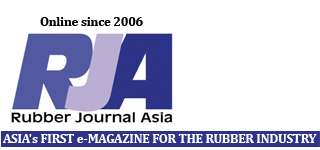New Mexicans produce roughly 2 million scrap tyres every year, many of which end up in illegal tyre dumps around the state while the rest are shipped out of state or recycled into other products.
GCC Rio Grande has a proposal to turn the waste into a benefit by using the tyres as fuel for its cement plant.
The Tijeras plant plans to seek permits to become the first plant in the state to use tyre-derived fuel, according to Doug Roark, vice president of energy and environment for GCC Rio Grande.
When done in a controlled environment, the fuel produces no odor, visible smoke or harmful effects on air quality, he said. Forty-eight cement plants across the country operate with tyre-derived fuel, according to a sustainable manufacturing fact sheet published by the Portland Cement Association.
The Tijeras plant’s sister plant in Pueblo, Colo., began burning tyres last week. If operating at 100 percent – hopefully in one to two years – Roark expects the plant to use 1.5 million tyres annually.
As a waste product, tyres are usually cheaper than raw materials such as coal, he added, making the change cost-effective for the plant.
GCC in Tijeras burns 66,000 tons of coal every year between two kilns, Roark said, but if the plant substitutes up to 20 percent of that with tyres, it could replace 19,000 tons of coal with 15,000 tons of tyres.
“It’s a very high-quality fuel. When burned in a controlled environment, it has more fuel value than coal would have,” he said. “Typically four tons of tyres would replace five tons of coal. It actually burns at a lower carbon greenhouse gas emission rate than what coal burns at.”
The U.S. Environmental Protection Agency has cleared the usage, coming out in support of “the responsible use of tyres in Portland cement kilns and other industrial facilities, so long as the candidate facilities: 1) have a tyre storage and handling plan; 2) have secured a permit for all applicable state and federal environmental programs; and 3) are in compliance with all the requirements of that permit,” according to a fact sheet released by the agency.
About 53 million tyres are burned for fuel each year, 41 percent of which go to cement plants. Other uses for scrap tyres involve recycling for asphalt, agricultural or miscellaneous uses.
Saul Alvidrez, plant manager at GCC Rio Grande in Tijeras, said the operation can easily adopt to tyre-derived fuel, and the only new equipment needed is for handling the tyres; otherwise the production process will remain exactly the same. The air temperature within the kiln ranges from 3,000 to 3,800 degrees Fahrenheit, hot enough to completely incinerate a whole tyre.
Modern cement plants shred tyres prior to burning since the kilns are shorter, but Alvidrez said the Tijeras plant – built in 1958 – is equipped to accept the tyres whole. Commercial tyres will not be accepted.
Despite the Environmental Protection Agency’s stamp of approval, tyre-derived fuel remains controversial.
Roland Hea, the permitting section supervisor with the Colorado Air Pollution Control Division, said both the Pueblo plant and another in Lyons, Colo., faced opposition from the public when the proposal was introduced.
“The plant in Lyons ceased (tyre-derived fuel operations) in response to concerns from citizens,” Hea said. “Some people feel that tyre burning is a good reuse of a resource that would be in a landfill and in some cases can reduce emissions. Others are concerned it might lead to emissions we don’t want. Similar concerns are brought up with coal.”
In New Mexico, the Tijeras plant must notify neighborhood associations within the area and hold meetings for public comment prior to updating the Title V operating permit, said Isreal Tavarez, environmental health manager for the Albuquerque’s Environmental Health Department. Then the plant must demonstrate it will keep emissions within EPA guidelines.
Joseph Ellis, manager of the Estancia Valley Solid Waste Authority, has embraced the concept for the possibilities it could hold for Torrance County.
“EVSWA has been working with GCC on an arrangement whereby the landfill would be a staging depot for tyres from all over the state,” Ellis said. “Some of them have to be de-rimmed, cleaned, cut, and then delivered to GCC in Tijeras on a just-in-time basis for their use in the kilns.”
If an arrangement can be worked out, the operation could add a number of jobs to the Moriarty Edgewood area, he added.
“Most of that is still in the works,” Roark made sure to clarify. “They (EVSWA) are very enthusiastic about the project because frankly there’s not a use for tyres within the state of New Mexico right now.”

